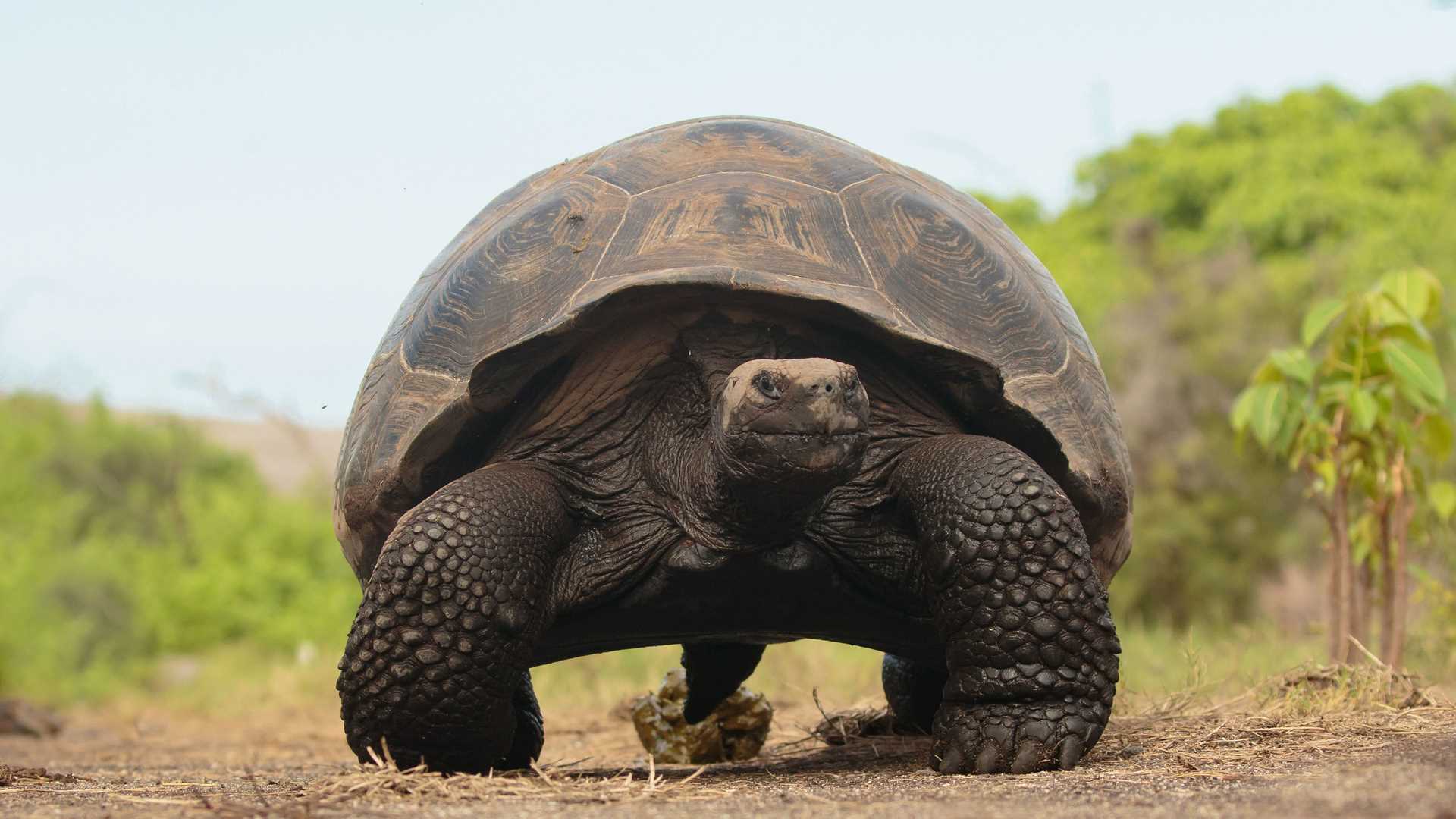During our morning exploration, we had a wet landing on a sandy beach to explore the inner side of the arid zone on this site. Along the way, we encountered several individuals of the Alcedo Volcano giant tortoise species. During this time of year, the rain creates a lush green environment, supplying plenty of food for these prehistoric reptiles to sustain their appetites. We counted up to 41 giant tortoises on the trail. It was quite an amazing morning, surrounded by these giants in the wilderness. We encountered a few Galapagos land iguanas, some of them basking under the sun and others feeding on leaves from poison apple trees.
A couple of Galapagos flycatchers collected nesting materials while Darwin finches feasted on seeds detached from trees by heavy rains in recent weeks. Isabela Island is home to five species of giant tortoises, and each of them inhabits one volcano.
On our way back, we went swimming in the sea. We enjoyed the great company of a few Galapagos penguins swimming nearby as brown pelicans fished.
After lunch, National Geographic Endeavour II navigated towards Tagus Cove, a visitor site located near the central belly of this seahorse shaped island. The site offered us the opportunity to kayak along the coast. We enjoyed sightings of Galapagos penguins, flightless cormorants, and Galapagos sea lions resting near the shore. Some of us also went deep water snorkeling. As flightless cormorants fished nearby, we swam among large pacific green sea turtles, Galapagos sharks, and penguins.
After kayaking and snorkeling, we had the opportunity to go hiking up a trail around Darwin Crater where we had a lake view. We finished our day with some light rain and a beautiful sunset in the distance. We are certainly ready to continue exploring this natural laboratory of evolution in the days to come.







